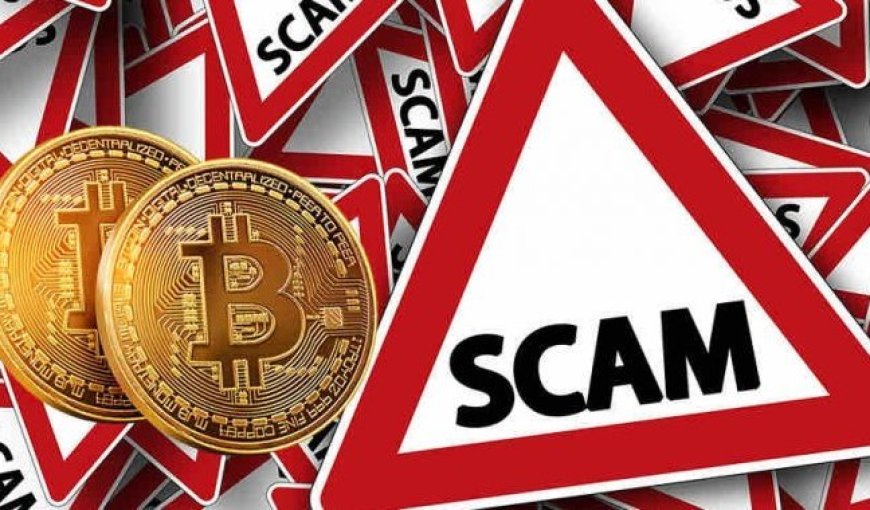Top 10 Crypto Scams to Avoid and How to Spot Them
Discover the top 10 crypto scams to avoid and learn how to protect your investments by identifying red flags and suspicious behavior in cryptocurrency
The world of cryptocurrency is exciting and fast-paced, but it's also filled with risks. As crypto adoption grows, so does the number of scams targeting newcomers and even seasoned investors. From rug pulls to fake exchanges, scammers are constantly finding new ways to steal your hard-earned digital assets. In this guide, we’ll explore the top 10 crypto scams to avoid and show you how to spot the signs before it’s too late.
1. Rug Pulls
Rug pulls are one of the most notorious scams in the DeFi and altcoin spaces. This scam happens when developers launch a new token or project, promote it aggressively to inflate its price, then suddenly drain all funds and disappear. Investors are left with worthless tokens and no recourse.
Warning signs of a rug pull:
- Anonymous or unverifiable developers
- No locked liquidity
- Promises of unrealistic returns
- No external audits
2. Phishing Attacks
Phishing scams are a long-standing cyber threat that’s especially dangerous in the crypto space. Scammers pose as legitimate services—like wallets, exchanges, or influencers—to trick you into giving up your private keys or login credentials.
Common phishing tactics:
- Fake emails with malicious links
- Social media messages claiming "urgent action needed"
- Look-alike domains mimicking real sites
- Fake airdrop forms requesting wallet info
3. Pump and Dump Schemes
This scam involves inflating the price of a low-cap coin through coordinated buying and social media hype. Once the price spikes, the scammers sell their holdings at a profit while others suffer steep losses.
Red flags of pump and dump schemes:
- Sudden price surges without news or updates
- Telegram or Discord groups promoting “secret” coins
- No long-term project roadmap
- Unusual trading volume on obscure exchanges
4. Fake Crypto Exchanges
Fake exchanges mimic the appearance of legitimate trading platforms but are designed to steal your funds. Some even allow you to deposit crypto, only to block your access once you try to withdraw.
Signs of a fake exchange:
- Poor website design and broken links
- No regulatory registration or licensing
- Lack of two-factor authentication
- Fake or manipulated trading volume data
5. Social Media Impersonation Scams
Scammers often create fake profiles impersonating well-known crypto personalities, influencers, or company executives. They’ll reach out offering investment opportunities, giveaways, or trading advice—all to steal from you.
How to identify impersonation scams:
- Slightly altered usernames (e.g., @elonmuskk)
- Promises of "double your crypto"
- No verified checkmarks on accounts
- Asking for crypto upfront to “unlock rewards”
6. Fake Wallets and Apps
Not all wallets and apps are safe. Fake ones often show up in app stores or websites, pretending to offer wallet services but instead steal your private keys and funds.
How to spot fake wallets:
- Low download numbers and poor reviews
- No official website or support team
- Requesting your seed phrase on sign-up
- Misleading branding or logos mimicking known companies
7. Ponzi and Pyramid Schemes
These scams promise high returns for recruiting new investors. Early participants may get paid, but the system collapses when new money stops coming in. It’s unsustainable and illegal in many jurisdictions.
Clues you’re in a Ponzi scheme:
- No real product or service behind the project
- Pressure to recruit others
- Unclear investment strategy
- Returns guaranteed regardless of market conditions
8. Fake Airdrops and Giveaways
Airdrops and giveaways are legitimate marketing tools in crypto, but scammers abuse them. They post fake events asking you to send crypto or enter your private info to receive tokens.
Signs of a fake giveaway:
- Requests for crypto to “verify your address”
- No official announcement from the real project
- Hosted on fake websites or Twitter pages
- Unreasonable reward promises (e.g., 10 ETH for joining)
9. Malware and Clipboard Hijackers
Some crypto scams are deeply technical, involving malicious software that hijacks your computer’s clipboard or installs keyloggers. When you try to send crypto, the address is silently swapped with one owned by the hacker.
Protection tips against malware:
- Use hardware wallets for storing funds
- Keep antivirus software updated
- Avoid downloading pirated software or clicking unknown links
- Double-check wallet addresses before sending
10. Initial Coin Offering (ICO) Scams
During the 2017 crypto boom, many ICOs launched without proper oversight. Investors poured millions into whitepapers and hype, only to watch the projects vanish.
What to watch for in ICO scams:
- Copy-paste whitepapers with no originality
- No working prototype or beta release
- Unverified team members and fake advisors
- Pressure to invest quickly before a “deadline”
Conclusion
The cryptocurrency world is full of opportunities—but also pitfalls. As you explore blockchain technologies and decentralized finance, always practice due diligence. Scams evolve, but the red flags remain familiar. Avoid emotional decisions, double-check every detail, and never share your private keys. Staying informed is your best defense against crypto fraud. With awareness and caution, you can safely enjoy the incredible potential of crypto investing.
What's Your Reaction?








